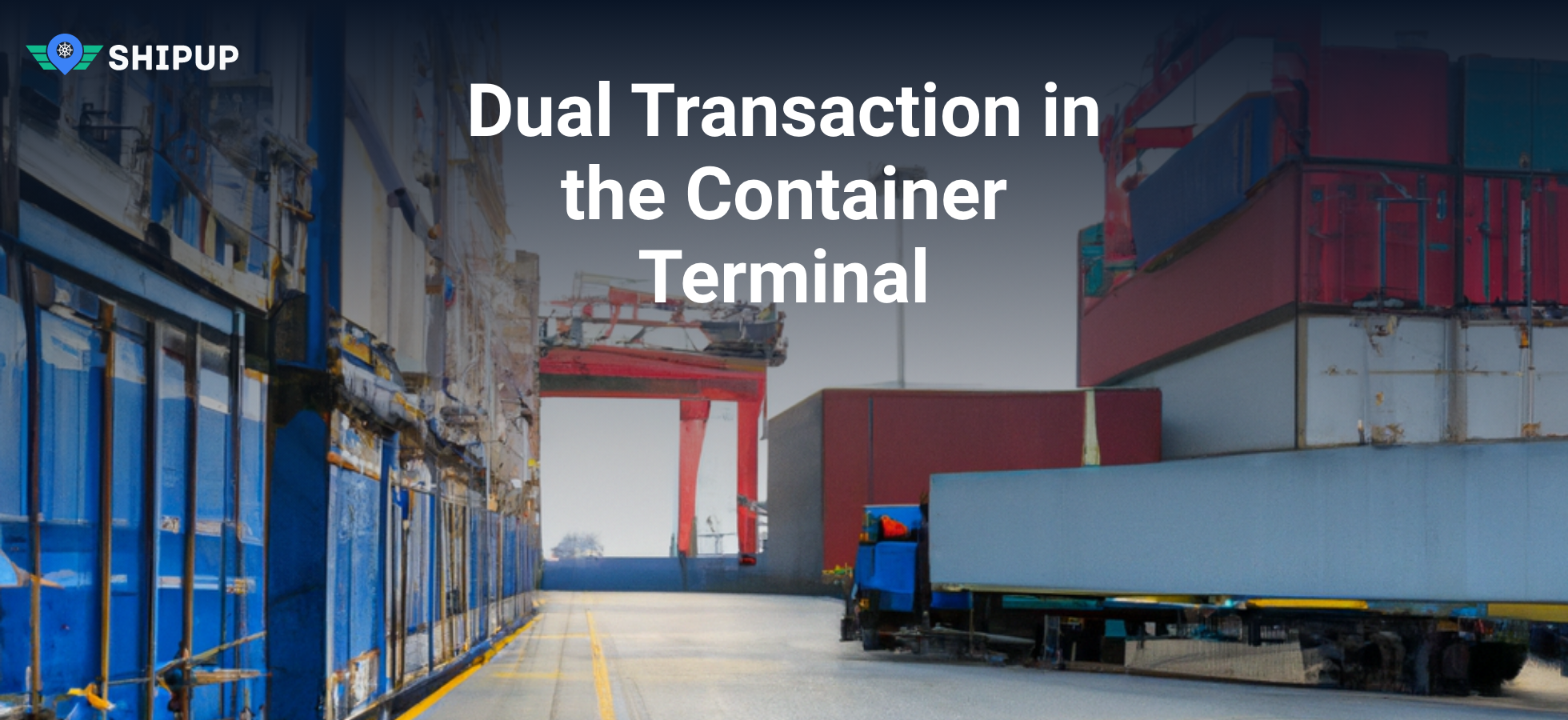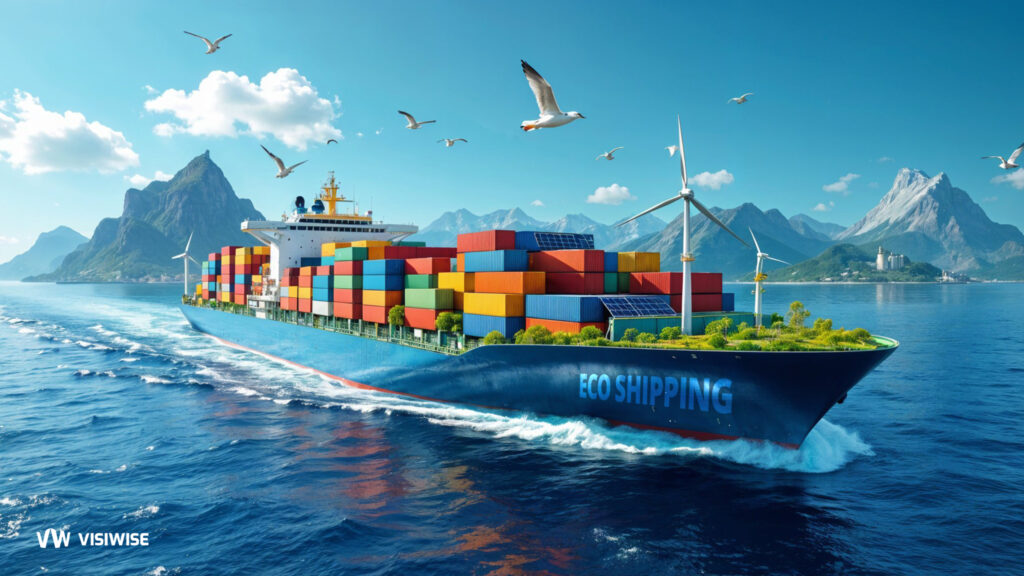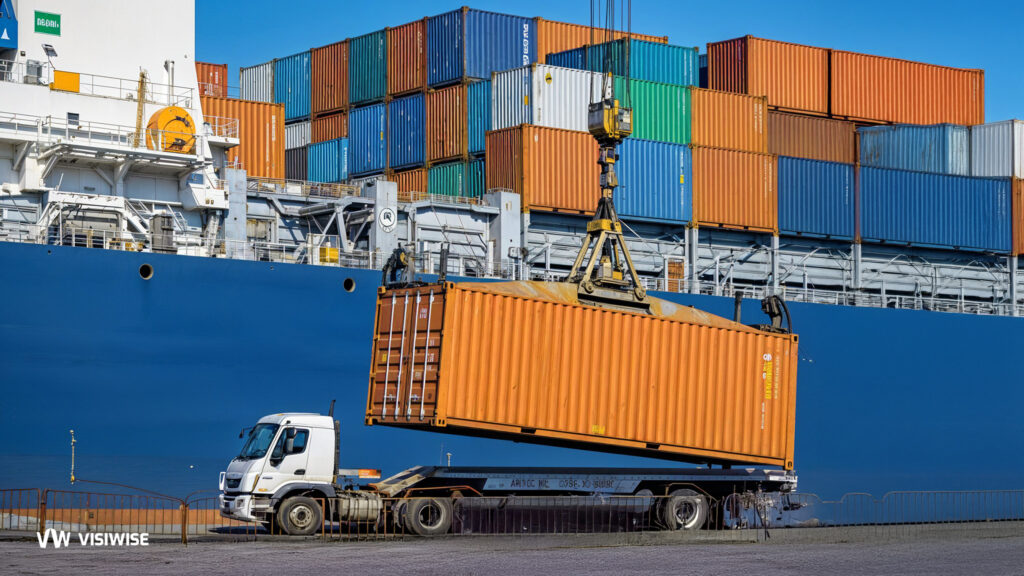Container terminals are a critical hub in the global supply chain, responsible for the efficient handling and storage of containers as they are loaded onto and off ships. One key factor that can impact the efficiency of container terminal operations is the use of dual transactions.
So, what exactly are dual transactions?
In the context of container terminals, a dual transaction is a process in which the handling of a container is recorded twice – once when it is loaded onto a ship and again when it is unloaded at its destination. This allows for a more accurate and transparent record of the movement of containers within the terminal and across the supply chain.
The use of dual transactions can bring a range of benefits to container terminal operations, including increased efficiency and productivity, reduced costs, and improved supply chain visibility and traceability. In this blog post, we will delve deeper into how dual transactions work in container terminals and the benefits and challenges of implementing them.
CTMS for Efficient Container Terminal Operations
A Container Terminal Management System (CTMS) is a computerized system used to manage the movement and storage of shipping containers within a container terminal. These systems are used to track the location, status, and movement of containers within the terminal, as well as to manage the handling equipment, labor, and other resources required to load and unload the containers onto ships and other transportation vehicles.
One example of a CTMS is the Dual Transaction system, which is used to manage the movement of containers within a terminal. This system involves the use of two transactions: one to move the container from the yard to the ship, and another to move it from the ship to the yard. This allows for more efficient tracking and management of containers within the terminal, as it allows for the separation of inbound and outbound containers
In addition to tracking and managing the movement of containers, CTMS systems may also be used to manage other aspects of container terminal operations, such as yard planning and optimization, gate management, and billing and invoicing. These systems can help to improve the efficiency and productivity of container terminal operations, and can also help to reduce costs and improve customer satisfaction.
How Dual Transactions Work in Container Terminals
The complex world of container terminal operations
The process of loading and unloading containers from ships is a complex and time-sensitive operation that requires careful coordination and planning. In a typical container terminal, containers are loaded onto and off ships using specialized equipment such as cranes and reach stackers.
What are dual transactions?
As containers are moved within the terminal and onto and off of ships, dual transactions come into play. A dual transaction involves recording the handling of a container twice – once when it is loaded onto a ship and again when it is unloaded at its destination. This is typically done using a combination of automated systems and manual processes.
Pre-arrival processing: Setting the stage for a successful dual transaction
The first step in a dual transaction is the pre-arrival processing of a ship. This involves collecting and verifying information about the ship and its cargo, including the type and number of containers being loaded or unloaded. This information is used to create a shipping manifest, which is a detailed list of the containers on board the ship
Tracking the movement of containers in real-time
Once the ship arrives at the terminal, the process of loading and unloading containers begins. As containers are lifted onto or off of the ship, the terminal’s automated systems record the movement of each container using data such as the container’s identification number and its location within the terminal. This data is then used to update the shipping manifest and track the movement of the containers within the terminal.
Completing the dual transaction and optimizing the supply chain
Finally, when the ship departs the terminal, the dual transaction is complete. The shipping manifest is finalized and made available to relevant parties along the supply chain, providing a transparent and accurate record of the movement of the containers. This helps to optimize terminal operations and improve supply chain visibility and traceability.
Benefits of using dual transactions in container terminals
Optimizing terminal operations and improving supply chain visibility
One of the primary benefits of using dual transactions in container terminals is the increased efficiency and productivity they can bring. By recording the handling of containers twice, terminal operators can more accurately track the movement of containers within the terminal and across the supply chain. This can help to identify bottlenecks and inefficiencies in terminal operations and optimize the use of resources such as equipment and labor.
Reducing costs and improving profitability
In addition to increasing efficiency, the use of dual transactions in container terminals can also help to reduce costs and improve profitability. By providing a more accurate and transparent record of the movement of containers, dual transactions can help to reduce the risk of errors and mistakes that can lead to costly delays and disruptions. In addition, dual transactions can help to reduce the need for manual data entry and paperwork, streamlining terminal operations and reducing labor costs.
Enhancing supply chain visibility and traceability
Another key benefit of dual transactions in container terminals is the enhanced supply chain visibility and traceability they provide. By recording the handling of containers twice, dual transactions create a detailed and accurate record of the movement of containers within the terminal and across the supply chain. This information can be used by relevant parties along the supply chain to track the progress of their shipments and make more informed decisions about inventory and logistics.
Improved customer satisfaction
Finally, the use of dual transactions in container terminals can also lead to improved customer satisfaction. By providing a more accurate and transparent record of the movement of containers, dual transactions can help to reduce the risk of delays and disruptions in the supply chain, leading to a smoother and more reliable flow of goods. This, in turn, can help to improve the reputation of the terminal and its customers
Challenges and considerations in implementing dual transactions in container terminals
Integrating dual transactions into existing terminal systems
One of the main challenges of implementing dual transactions in container terminals is the complexity of integrating them into existing terminal systems. Dual transactions typically involve the use of automated systems and software to record the handling of containers, and integrating these systems with existing terminal systems can be a complex and time-consuming process. Terminal operators may need to invest in new software and hardware, as well as train personnel on how to use the new systems.
Training and educating terminal personnel
In addition to the technical challenges of implementing dual transactions, there is also the need to train and educate terminal personnel on the use of these systems. This can be a significant undertaking, as it may require a significant portion of the terminal workforce to learn new processes and technologies. Ensuring that terminal personnel is fully trained and educated on the use of dual transactions is essential for the successful implementation of these systems.
Ensuring the accuracy and reliability of dual transaction data
Another challenge of implementing dual transactions in container terminals is ensuring the accuracy and reliability of the data collected through these systems. Dual transactions rely on the accurate recording of information about the handling of containers, and any errors or mistakes in this data can have serious consequences for terminal operations and the supply chain. Terminal operators must have robust systems in place to verify and validate the accuracy of dual transaction data.
Managing the cost and complexity of implementing dual transactions
Finally, implementing dual transactions in container terminals can be a costly and complex process, and terminal operators must carefully manage these challenges to ensure a successful implementation. This may involve working with specialized vendors and consultants to develop and implement dual transaction systems, as well as careful planning and budgeting for the costs of these systems.
Visiwise and Supply Chain Management
The Visiwise visibility platform is a powerful tool that helps companies track and manage their shipments and supply chains. By integrating with various shipping carriers and other supply chain partners, the Visiwise platform provides real-time visibility into the location and status of shipments. This allows companies to track the progress of their shipments, identify potential delays or disruptions, and take action to mitigate any issues that may arise.
In addition, the Visiwise platform provides a range of features and tools to help companies manage their supply chains more effectively, such as document management, and collaboration tools. Overall, the Visiwise platform is an invaluable resource for companies looking to optimize their supply chain operations and improve the efficiency and reliability of their shipments.



